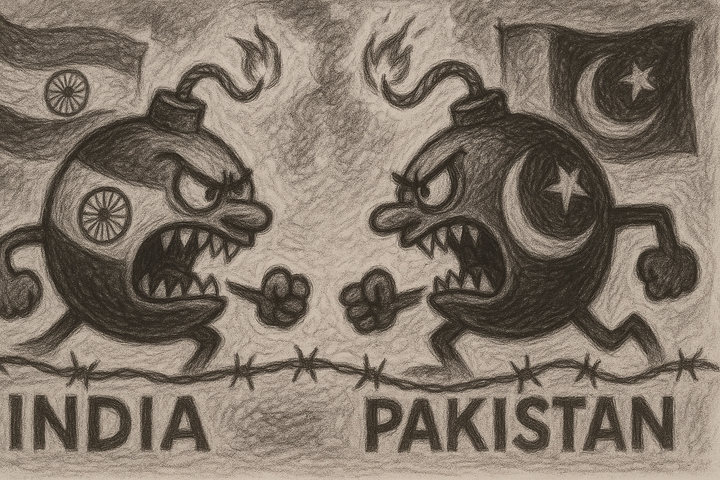USAID at a Crossroads: Reform, Transparency, or Collapse?

As someone deeply invested in responsible governance and financial accountability, I recognize the importance of curbing inefficiencies and addressing corruption within public institutions. However, while addressing bureaucratic inefficiencies is necessary, it is equally important to consider the broader implications of weakening an institution that has historically played a significant role in international stability. The ongoing debate over whether to significantly reduce USAID’s budget—or dismantle it entirely—brings to light important questions about the future of U.S. foreign aid, national priorities, and the long-term consequences of such decisions.
Understanding USAID’s Role
The United States Agency for International Development (USAID) was established in 1961 by President John F. Kennedy’s administration with the mission of providing humanitarian and economic assistance worldwide. While its mission is noble, USAID has also been used as a tool of soft power, advancing U.S. geopolitical interests under the guise of international aid. The agency has been plagued by inefficiencies, corruption, and mismanaged funds—issues that former President Donald Trump and current figures like Elon Musk claim to be addressing by significantly reducing its budget. However, slashing its funding or dismantling it without a viable alternative could lead to unintended consequences that harm both global stability and U.S. interests.
Does Cutting USAID’s Budget Help Reduce the Deficit?
USAID’s annual budget accounts for roughly 1% of total U.S. government spending, with approximately $70.3 billion allocated to foreign assistance in recent years. Given that the federal budget deficit often exceeds $1 trillion, eliminating USAID would make a negligible dent in the overall deficit. The claim that dismantling USAID would solve America’s fiscal woes is more symbolic than substantive. While financial accountability is crucial, the financial impact of these cuts does not justify the potential geopolitical risks they create.
The Good, the Bad, and the Ugly of USAID
Notable Achievements:
- Global Health Initiatives: USAID played a key role in the eradication of smallpox, the fight against HIV/AIDS (PEPFAR) launched under President George W. Bush, and COVID-19 vaccine distribution during the Biden administration, spearheaded by Dr. Anthony Fauci and President Joe Biden.
- Economic Development: Programs such as Power Africa, championed by President Barack Obama, and Feed the Future, launched under the Obama administration, have lifted millions out of poverty through sustainable infrastructure and agriculture initiatives.
- Democracy and Human Rights: USAID has supported democratic transitions in South Africa (assisted by President Bill Clinton), Eastern Europe (notably during George H.W. Bush’s tenure), and post-Arab Spring nations, helping develop civil society institutions.
- Disaster Relief: USAID has been a first responder in Haiti (2010, under President Barack Obama), the Indian Ocean tsunami (2004, under President George W. Bush), and Ukraine (2022-present, under President Joe Biden), providing essential humanitarian assistance.
Failures and Controversies:
- Corruption and Waste: Billions of dollars in aid have been lost to fraud, mismanagement, and inefficiency, particularly in Afghanistan reconstruction (initiated under President George W. Bush and continued through the Obama and Trump administrations), Haiti earthquake relief (2010, under the Obama administration), and food aid to Ethiopia.
- Political Interference: USAID has been accused of covertly supporting regime change efforts in Cuba (notably under President Ronald Reagan), Venezuela (during President Donald Trump's tenure), Bolivia, and the Middle East, undermining its credibility as a purely humanitarian organization.
- Lack of Oversight: Many USAID projects have been poorly monitored, leading to unfinished infrastructure, misallocation of resources, and funds being funneled into private contractors rather than local communities.
Best- and Worst-Case Scenarios for USAID’s Future
Best-Case Scenario: Reform, Not Ruin
Rather than gutting USAID, the government should implement reforms that emphasize accountability, transparency, and efficiency. Key measures could include:
- Better oversight and auditing mechanisms to prevent fraud and corruption.
- Greater investment in local organizations instead of funneling aid through expensive U.S. contractors.
- Redefining USAID’s mission to ensure that aid serves humanitarian purposes first, not political agendas.
- Targeted budget cuts that eliminate inefficiencies without compromising critical global aid programs.
Worst-Case Scenario: Swift Cancellation Without Alternatives
If USAID is dismantled without a sufficient alternative, the consequences could be severe: key humanitarian efforts initiated under past administrations—such as President Obama’s initiatives in Africa, Bush’s global health programs, and bipartisan-supported disaster relief—could be undermined. Political leaders across the spectrum, including Senators like Lindsey Graham and Bernie Sanders, have argued for a more strategic restructuring rather than wholesale defunding.
- Millions would lose access to life-saving health programs in developing countries.
- Geopolitical instability would increase as U.S. aid programs disappear, creating power vacuums that adversaries like China and Russia could fill.
- The U.S. would lose diplomatic leverage, further aligning with Trump’s isolationist approach that weakens our influence abroad.
- Domestic industries benefiting from USAID contracts (such as agriculture and energy) could suffer economic losses.
A Balanced Perspective on USAID’s Future
The Right-Wing Argument:
Many conservatives argue that USAID is a bloated, unaccountable agency that serves as an extension of the U.S. deep state. They claim that foreign aid should be privatized, with charitable organizations or direct foreign investments taking the lead rather than taxpayer-funded bureaucracies. This aligns with Trump’s “America First” approach, emphasizing that U.S. resources should be used at home rather than abroad.
The Progressive Argument:
On the left, there is concern that hasty cuts to USAID will harm vulnerable populations and damage U.S. credibility on the global stage. While reform is necessary, gutting an agency that supports health, democracy, and disaster relief without an alternative plan could be disastrous for both humanitarian efforts and American diplomacy. Many progressives advocate for restructuring USAID rather than eliminating it, ensuring that aid is delivered efficiently while reducing waste and corruption.
Final Thoughts: Accountability Over Annihilation
USAID is far from perfect—it has been mismanaged, used for political leverage, and has lost billions due to inefficiencies. However, an abrupt cancellation or sweeping budget cuts without a well-structured alternative could lead to disruptions in critical humanitarian efforts, a weakened U.S. presence in global affairs, and potential geopolitical instability. While there is merit in reassessing its structure and effectiveness, the risk of hasty decisions outweighing thoughtful reforms remains a key concern.
Before moving on from USAID, there must be a thorough audit and investigation into where this aid has really gone. Hastily closing the agency or making drastic cuts without transparency would risk sweeping bad practices under the rug rather than addressing them. Rather than framing USAID as either an untouchable institution or a failing bureaucracy, the most effective approach is deliberate and strategic reform. If the current administration is truly committed to transparency and accountability, they must articulate a viable replacement or restructuring plan before dismantling programs that serve vital international functions. Without a clear roadmap, this could easily become a reactionary move with significant long-term consequences.




Comments ()